How long is the Annapurna Base Camp Trek?
Normally, the trek to Annapurna Base Camp is 67km long and takes 10 days from Pokhara to back to Pokhara. However, sometimes it might be a few more days extra for unpredictable weather and additional acclimatization. This trek is a moderately graded trek in the foothills of the Annapurna Himalayan range, so normally you need some training for your body to prepare for the Annapurna Base Camp trek.
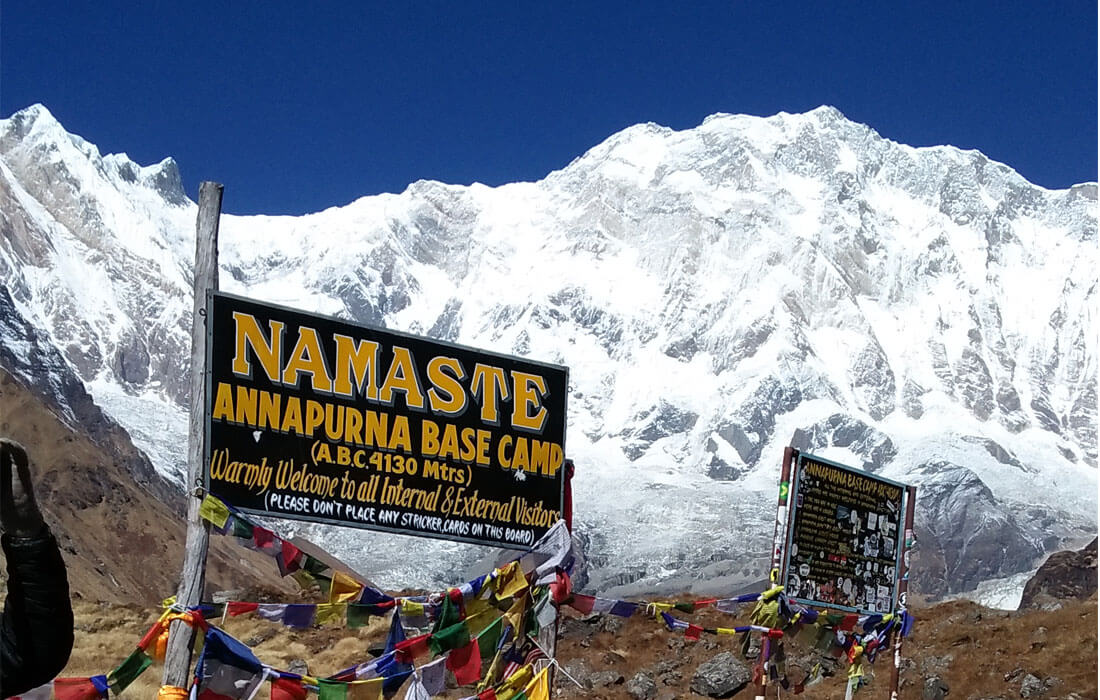
There are two different routes for the Annapurna Base Camp trek. One is directly taking a Jeep from Pokhara and driving to Ghandruk and starting hiking from there. Another is to take a Jeep to Thikhedhunga and hike through the Poonhill.
- Way up: Kathmandu-Pokhara-Thikhedhunga- Poonhill-Chomrong-Dovan-MBC-ABC
- Way Down: ABC-Himalaya-Bamboo-Chomrong-Jhinu-Nayapul-Pokhara-Kathmandu.
(Note: Above mentioned route is the widely used one, though you can hike from Landruk, Jhinu Danda and other places also. Please do contact us for the customized itinerary for the Annapurna Base Camp trek.)
Is Annapurna Base Camp Trek difficult?
Annapurna Base Camp trek is considered as the Moderately graded trekking trail that covers around 70km in 10 days. This trek is one of the most rewarding but also requires a bit of proactive preparedness to achieve this milestone. Cardio exercise, running, regular jugging, and some stretching for a couple of weeks before the treks are good ideas to enhance your stamina. Normal fitness levels and beginner trekkers can easily accomplish this trek however for the beginners, it requires proper guidance of all the mountain climate, atmosphere, and environment. However, the more fitter and experienced we are, the trip would be more easy and adventurous for sure. Past hiking experience would be an added advantage for you since you don’t need extra mountaineering techniques and skills to do the Annapurna base camp trek.
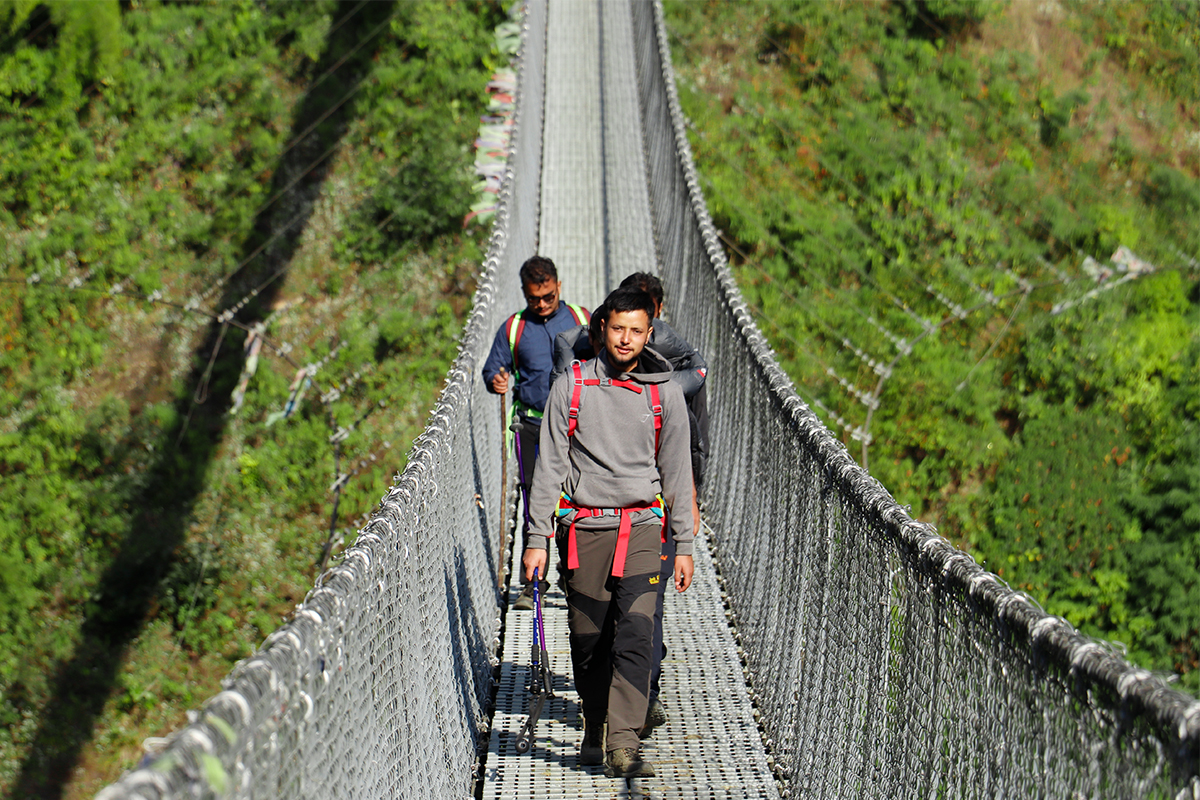
Normally, trekkers who are able to hike 5-7 hours every day with a medium along with a light day pack can easily take part in this trek. The trail includes rocky mountains, steep ascents, descends, narrow trails, banks of the river, straight trails, and sometimes slippery and snowy trails as well. It is very essential that you are as healthy as possible before starting your trek.
How much does it cost to go to Annapurna Base Camp Trek?
On average the journey itself is of 8-10 days and the cost of the Annapurna Base Camp trek normally ranges between 1100USD-1500USD depending on flights transfer and additional routes that you take. The above-mentioned cost includes all the ground transfers, all the required permits, full board meals, guide, porter, accommodations, and certificate along with a one-day city tour in Kathmandu. You will get a handsome discount if you are traveling in a bigger group.
The cost of the Annapurna Base Camp trek mostly depends upon if you’re traveling private or in a group and the itinerary that you would choose. Traveling in groups can be cheaper as you’ll share porters, guides, and hotels during the trek whereas the private treks are tailored as per the requirements of the clients.
Is Annapurna Base Camp trek safe?
Trekking is the best adventure of all time for most travel enthusiasts. However, it comes with adventure as well as all inheritance risks. But, if you are traveling through the local travel agency, we take great care in designing our treks and itineraries to ensure safety on the trek. Mountains are always a mysterious land of unpredictable weather, fewer human settlements, rugged trails, forests, and least navigated areas. While making itineraries, we put some extra days for the acclimatization if needed and for unfavorable weather conditions. Besides this, our trek leaders team will be fully equipped with the things that you might need during the trekking like an oximeter, blood pressure monitor, first aid box, and other essential things. The guides and trekking leaders will see your health condition every day and guide you accordingly. Regarding the security of the Annapurna Base Camp trek, you can freely walk, take pictures and enjoy the view. But, at the same time walking with groups, maintaining the distance with the team leader is highly suggested. Training properly for at least a month, hydrating yourself during the trek also ensures the safe completion of your trek.
What is the best season for Annapurna Base Camp Trek?
The weather situation in the Himalayas is different from what we heard, read, and expected about it. In the context of Nepal, generally in high mountains, people love to trek during spring and autumn. In this two-season, you can get a chance to experience the good weather, comfortable trail, and majestic views of snowy peaks.
The Spring season normally falls from March to May. This is the season of the year when wildflowers bloom and you will get the most comfortable temperature in the mountains. Also, mountains are open from morning to late afternoon, so that you can cherish the beautiful view of snow-capped mountains during the spring season. In Nepal, most commercial mountaineering also happens during the spring season.
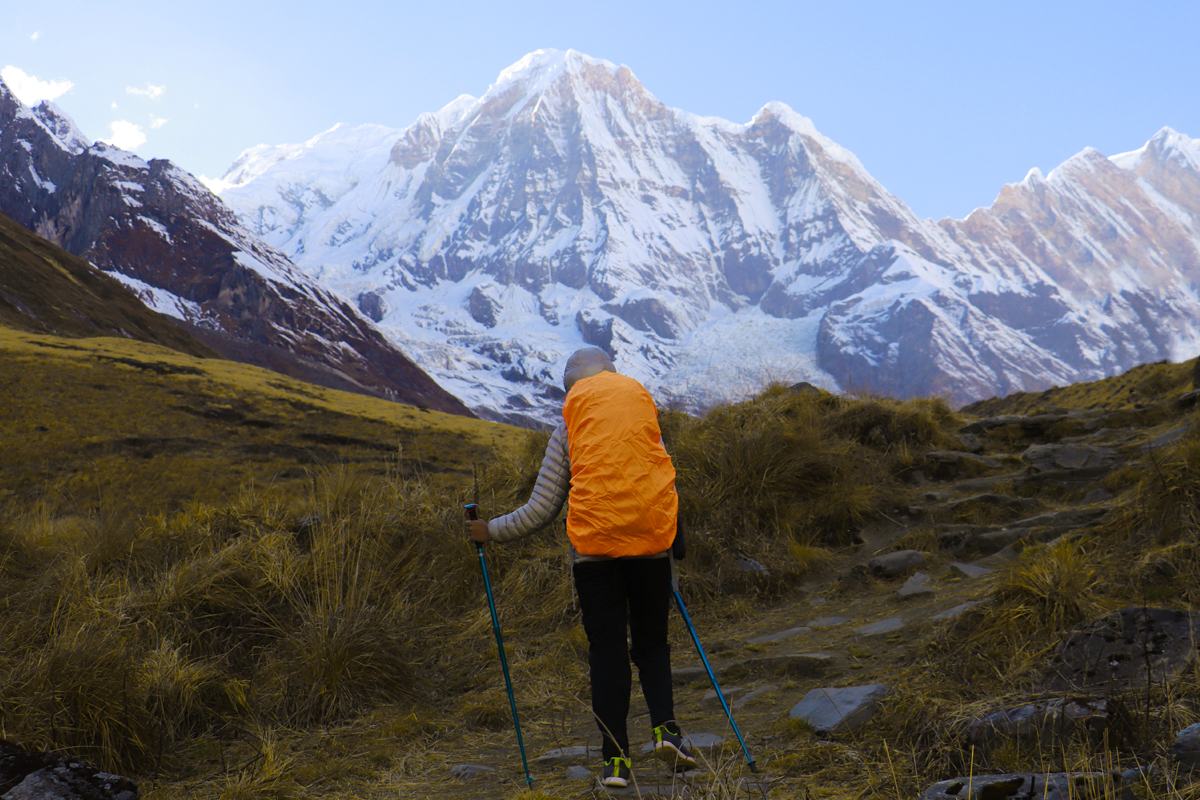
Likewise, Autumn is the most chosen season by trekkers which falls from Late September to Mid November. This season is the best time of the year for crispy days and clear mountain views. Weather also supports trekkers as you can see some of the correspondence of monsoon in mountains which will add extra beauty in the Himalayas. Of course, winter treks and monsoon treks are also possible in mountains but you need proper guidance and all the preparedness along with less expectation of mountain views. We generally recommend the spring and autumn seasons for the Annapurna Base Camp trek.
How cold is the Annapurna Base Camp?
The first few days of trekking in the lower Himalayan range normally look warm and slightly moderate with dense alpine forest and hilly terrain. The second half of the trek takes you right into the cooler and often freezing altitudes of the mountains. At Annapurna Base Camp, the temperature can be 2 to -10 degrees, on average. Be prepared with your clothes as well. Generally, morning and evening would be cooler and daytime remain warm until the weather gets foggy and windy. As compared to other popular trekking trails such as Everest Base Camp, Annapurna Circuit Trek, and Manaslu Circuit Trek, the Annapurna Base Camp trek is slightly less cold.
What are the accommodations in the Annapurna Base Camp trek?
Annapurna Base Camp trek is one of the most popular and renowned trekking trails in the Himalayas of Nepal. This classical trek has a lot of good tea houses in high altitudes and very nice hotels and guest houses in lower altitudes. The rooms are cheaper if you eat your meal in the same hotel. Normally in Ghandruk, Ghorepani, Chomrong and Jhinu Danda have nice rooms with attached bathrooms and mountain views. Afterward, the living places would be on a normal, sharing basis but every teahouse will offer the best hospitality as much as possible.
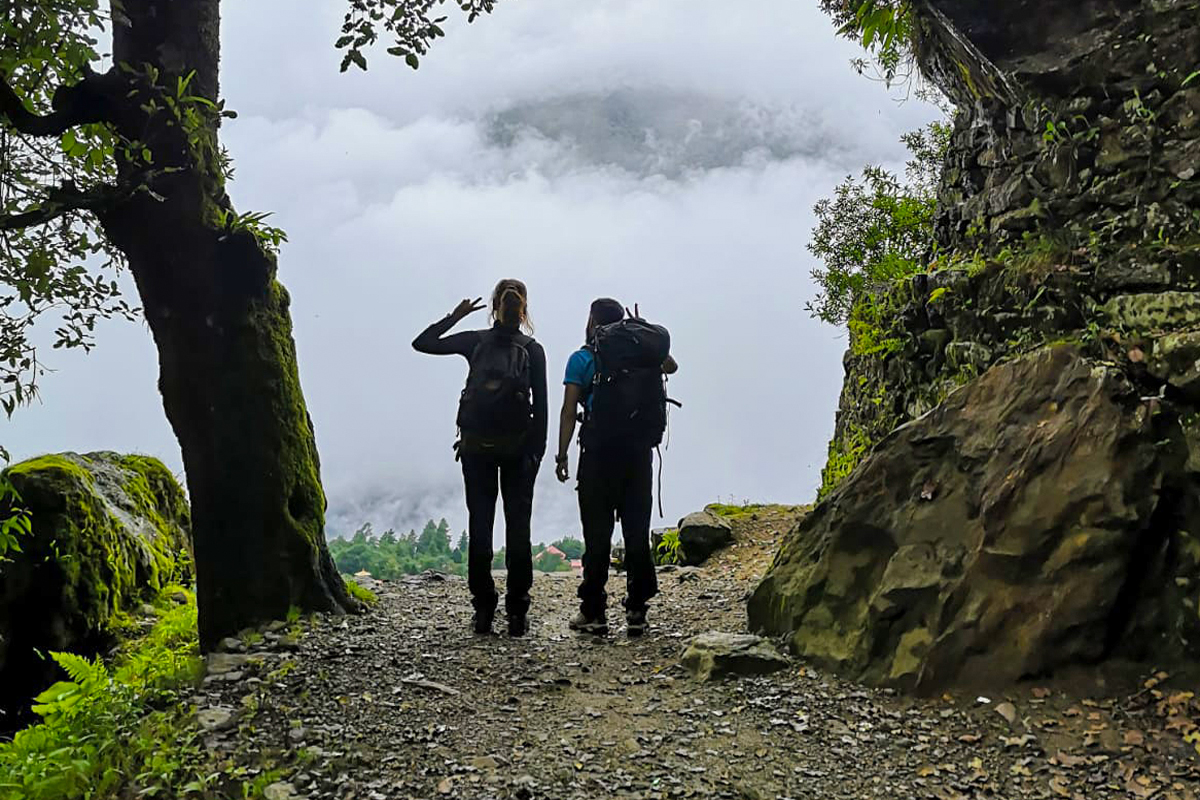
The bed has a good mattress, a clean bed sheet, one warm blanket, and a comfortable pillow in a cozy room. Also, the more you ascend up towards the base camp, the number of tea houses will be less and will be occupants during the prime trekking season.
How is the food & drinking water in Annapurna Base Camp Trek?
The food during the Annapurna Base Camp Trek is similar to other popular trekking trails in Nepal. The main highlight dish is the Nepali Dal Bhat set which includes boiled rice, lentil soup, vegetables, pickle, and if you want you will get meat until Dovan as well. Besides this, you will get almost all the popular international and continental cuisine along with some other local tastes in Annapurna Region.
Normally at breakfast they serve, set breakfast, porridge, omelets, boiled eggs, chapati, pancake, Gurung bread, and muesli. You will get normal coffee, tea, and juice along with breakfast.
During Lunchtime, you can either order Dal Bhat Set, or fry rice, pasta, spaghetti, macaroni, dumplings, and some other light meals. As with breakfast, you can have tea, coffee, and juice anytime.
At Dinner, same as at lunch, you can choose your meal from the menu. If you are used to eating light then you can order chapati and vegetable curry as well. The tea houses serve vegetarian meals, vegan meals, gluten-free meals as well if required. For those meals, you should inform your guide/trekking leader beforehand.
Regarding the safe drinking water and normal usable water in the Annapurna Base Camp trek, there are few options for drinking water. If you have water purification tablets and a water purifier, in that case you can ask for normal water from the hotel/lodges you stay in and drink that directly after the purification. Another option is you can buy the already filtered mineral water from the hotels/tea houses. Also, once you reach higher, you can order hot water in a pot and drink that water instead of a cold one. It would be slightly more expensive than normal water but it’s good for high altitudes.
Besides this, we always recommend bringing some protein bars, chocolates, dry nuts, and candy bars which provide additional energy while trekking.
Entrance and Permit of Annapurna Base Camp Trek?
Since the Annapurna Base Camp trek lies inside the Annapurna Conservation Area, you’ve to get the respective permit to enter inside the Annapurna Region. If you are traveling through the local travel agency, they will arrange all the necessary permits and access to get inside the Annapurna Region. Trekkers can get an ACAP entry permit and TIMS card by submitting a copy of their passport and two passport size photographs.
Permit for SAARC Countries
- ACAP Entrance Fee: Rs 200/-
- TIMS Card Fee: 20USD for solo travelers and 10USD for group trekkers.
Permit for Other Countries
- ACAP Entrance Fee: Rs 3000 (26USD)
- TIMS Card Fee: 20USD for solo traveler and 10USD for group trekkers
Both ACAP entry permits and TIMS cards are valid for single entry to the region and you must carry both of the permits during the trek. These entry permits are non-transferable and non-refundable. You can get both of the permits in the Nepal Tourism Board office in Kathmandu and the TAAN office in Pokhara if you are traveling solo in the Annapurna region.
Travel Insurance for Annapurna Base Camp Trek?
When you are hiking or traveling in high altitudes, your travel insurance is very important. Travel insurance is one of the most needed documents for trekking in the high Himalayas all over Nepal. Annapurna Base Camp trek is a moderately high altitude trek as you need to cross the 4,000m altitude, narrow and steep trails sometimes. Thus, if travelers, unfortunately, face any kind of consequences while trekking, that insurance might be the best for you. It saves you from paying a huge amount at once, so we request all the travelers to get travel insurance before heading to Nepal for trekking and any kind of adventurous activity. Besides this, make sure that your insurance policy also covers emergency helicopter evacuation, medical expenses, and that policy covers at least 5,000m altitude.
Is a solo trip possible for Annapurna Base Camp Trek?
Solo trekking or solo female trekking in Annapurna Base Camp is possible but not recommended. During the peak trekking season, you will meet many trekkers from different countries on the trail. However, we highly recommend trekking in groups or with a local agency in the high mountains. Annapurna Region is almost easy to navigate but sometimes you would see many sub trails made by locals. The higher you hike, the villages become less, several different paths will come and if anything will happen you might feel helpless. Trekking with a guide and in the group would be hectic but it’s the safest way in high mountains. You might face the problems of altitude sickness, normal injuries, and other casual consequences. For such a situation, your guide will help you to take the necessary precautions that ultimately help you to reach your destination. Local guides also show you the proper trails, give you the idea of daily walking, distance, time, and condition of trekking trails along with the best things of Annapurna Region, name of the mountains, people who live in that area, their culture, and other necessary information regarding this trail. So, we only recommend solo trek in Annapurna Base Camp, if you are fully aware of all the future consequences and trekking routes.
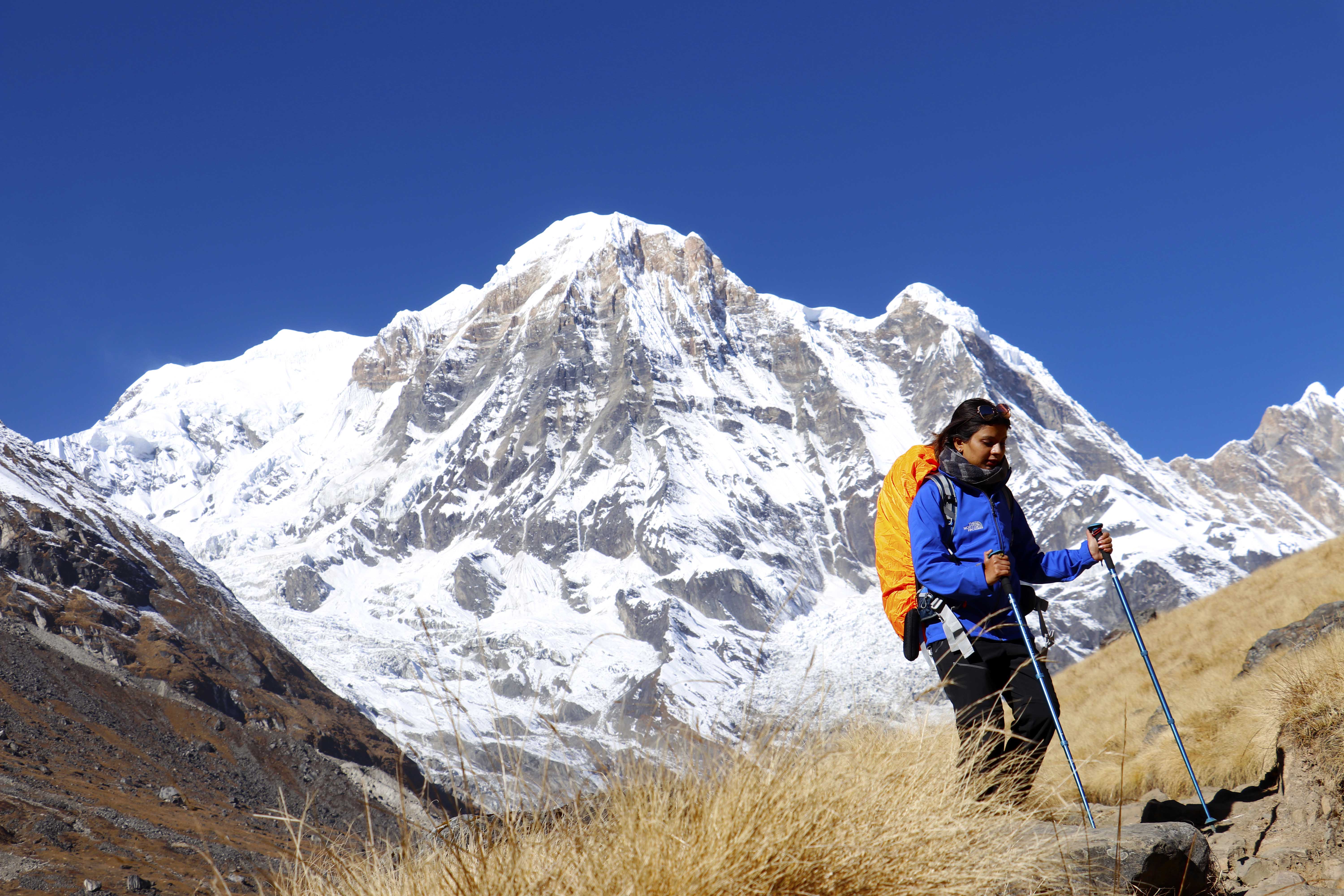
What to pack in Annapurna Base Camp Trek?
Since Annapurna Base Camp Trek is moderately graded trekking in the Annapurna region, make sure that you do not bring too much stuff especially if you’re planning to do it without a porter or even solo. You don’t need that many things as you are going to stay in the tea house every night. Normally for clothing, you can bring a pair of the base layers, second layer, and outermost layer.
- A pair of hiking trousers and shorts.
- Light polyester trekking shirts.
- A waterproof shell jacket and raincoat are also helpful for you. Sometimes there might be chances of unexpected rainfall even in normal trekking season.
- Required underwear and at least 4 pairs of socks.
- Gloves, hat, neck, and mount cover. So that you can save your face from the heavy wind.
- A pair of hiking shoes, sunglasses, a pair of sandals, a trekking bag, and your other regular medicine if you are taking any.
- Sleeping bag, toilet paper, towel, toothpaste, toothbrush, suncream, and hand sanitizer for your regular use.
- Also, the most useful thing is a water bottle and water purifier if you want to drink regular water.
How is the facility of Internet, Electricity and Mobile Network in ABC Trek?
Annapurna region trek is a classical and renowned trekking trail in the world. So, the facility of internet, electricity, and mobile phone is quite good as compared to other off-the-beaten trekking trails in Nepal. There are various ways to use the internet in the Annapurna Base Camp trek. One is you can get the Ncell/NTC sim card while landing in Nepal and buy a data pack so that you can stay connected through the trek except for the Himalayas to Annapurna Base Camp. With that SIM card, you can make a call also. It would be a little more expensive if you call outside Nepal but you can be connected through the trek with your friends and family. Also you the guest house will have normal wifi also, you can use that wifi but they will charge a little amount for sure.
Regarding the electricity, you will get normal electricity power until Deurali, sometimes they charge you a very little amount for the battery charge. At Machhapuchhre Base Base camp and Annapurna Base Camp, they don’t have normal electricity so you have to use thor solar power but they will charge a certain amount for this. Furthermore, as you start to reach higher altitudes, the mobile network and internet connection will be weaker.
Normal itinerary for Annapurna Base Camp Trek?
There are different routes that can take you to the Annapurna Base Camp. Almost all the routes terminate at Chomrong and from there onwards it’s the single way until base camp. From Pokhara you can hike up to Dhampus and follow Landruk and get to the Jhinu is one route to ABC. Drive from Pokhara to Ghandruk directly and start hiking towards Chomrong is another common trail. Some people who already did Annapurna Circuit trek and meet at Ghorepani and continue towards Chomrong. The most popular and preferred one is given here. This trail goes through Nayapul, Ghorepani, and Poonhill.
- Day1: Drive to Nayapul and trek to Ulleri
- Day2: Trek to Ghorepani
- Day3: Trek to Tadapani
- Day4: Trek to Chomrong
- Day5: Trek to Dovan
- Day6: Trek to Deurali
- Day7: Trek to Annapurna Base Camp
- Day8: Trek back to Sinuwa
- Day9: Trek back to Jhinu Danda
- Day10: Trek to Matkyou and drive back to Pokhara
Acute Mountain Sickness and its preventive measure?
Acute Mountain Sickness (AMS) is not a regular situation, it only occurs when your body is not able to adjust to the high altitude climate and environment. So, the sickness differs from person to person according to the age of people, health status, physical fitness, and experience of hiking at high altitudes. In Annapurna Camp Trek, many people feel the symptoms of AMS. If the symptoms of the illness are not taken care of properly, the situation can even turn critical. That’s why we always suggest travelers to trek with guides and local travel agencies.
Some Common Symptoms of AMS
- Headache ( both side and one side of the head)
- Loss of appetite
- Nausea and vomiting sometimes.
- Tiredness and dizziness.
- Feel discomfort while sleeping.
- Increase the heart rate and shortness of breathing.
Common Prevention of AMS
- Keep your body hydrated and drink at least 4-5 liters of water every day when you cross above 3,000m
- Take plenty of rest after finishing your daily hike.
- Consume enough food and calories while trekking.
- Wear enough and make your body warm.
- When you feel most of the AMS symptoms, descend to a lower altitude as soon as possible.
- Ascend slowly and acclimatize properly according to the needs of your body.
- Travel with a local guide and travel agency so that they will help you to trail for all the possible consequences.
- There are few medicines like Diamox that help to prevent sickness. But, remember one thing, before taking any drugs related to AMS consult with related doctors or medical experts.
These are the essential aspects for one who is planning for a trip to Annapurna Base Camp. It will give you an idea that many do not precisely fit when you find yourself on the trek. However, this guidebook is just a fraction of what the Annapurna Base Camp trek entails. In general, you will have exceptional times, although some aspects might be off-putting. The breathtaking views of snowy mountains, valleys, landscapes, and glacial scenery will be a rewarding experience. For more details and a customized itinerary of the Annapurna Base Camp trek, feel free to contact us anytime.







